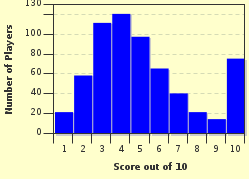Quiz Answer Key and Fun Facts
1. William Henry Perkin accidentally made an artificial mauve dye in 1856. How old was he at the time?
2. The discovery of mauve dye was accidental because William Perkin was really trying to make something else. What was it?
3. Why did William Perkin finally choose the name mauve for his new colour?
4. Recognising the commercial potential of his mauve dye, William Perkin decided to manufacture it himself. Where did he locate his factory?
5. In the 1860s, mauve was the height of fashion. Which trendsetting European ruler helped to popularise the new colour in late 1857?
6. The discovery of an artificial mauve dye was soon followed by more colours. Which of these is NOT an artificial dye?
7. Unusually for a scientist, William Perkin became rich from his discovery of mauve dye. Which of these factors contributed to this?
8. Which publication, in August 1859, used the phrase "Mauve Measles" to describe the way in which the new colour became fashionable?
9. "Never trust a woman who wears mauve, whatever her age may be. It always means they have a history."
Who wrote these words of advice?
10. 1906 saw the 50th anniversary of Perkin's discovery of mauve dye. How was this celebrated?
Source: Author
bucknallbabe
This quiz was reviewed by FunTrivia editor
LeoDaVinci before going online.
Any errors found in FunTrivia content are routinely corrected through our feedback system.

